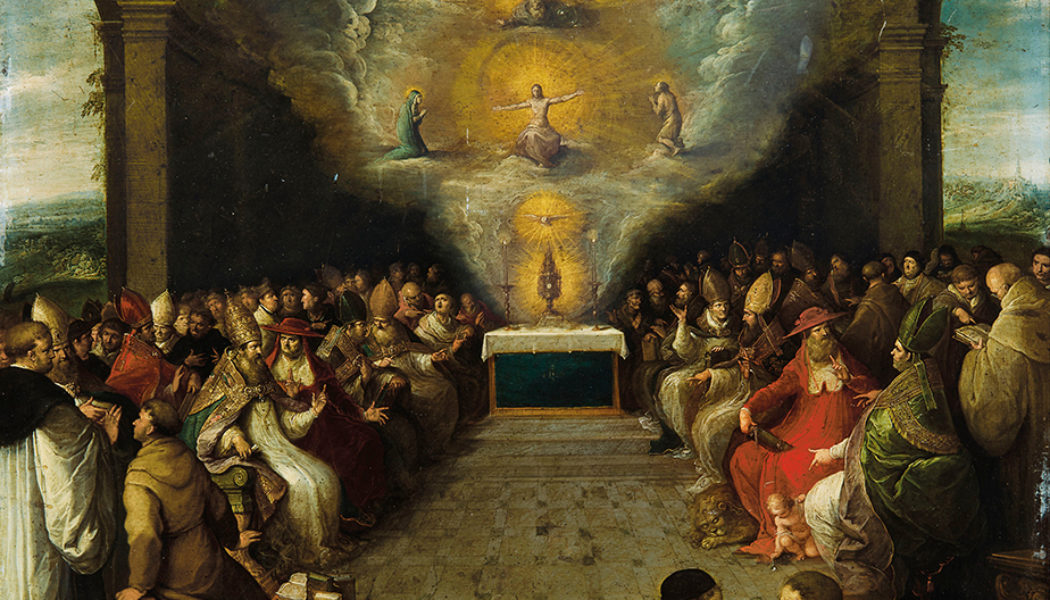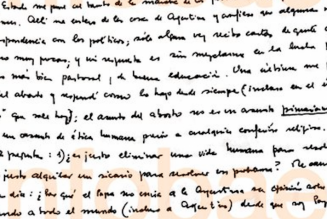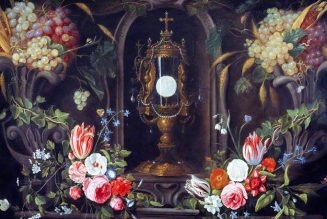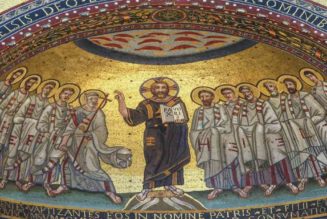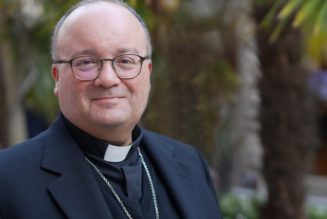
What do we see at Mass? Often enough, we encounter a mundane vision of outdated architecture, some empty pews, those who made it there struggling to pay attention, and liturgical gestures that have grown overly familiar. If only we could look deeper, we would see Calvary opening before us, we would see Christ offering his flesh and blood at the Last Supper, a myriad of angels and saints joining us, and an open road leading us to the heavenly Jerusalem. It takes faith to grasp this and without it, it’s no surprise why many people feel like they don’t need to bother showing up. They only see the outside, the shell of our sacramental ritual that lacks life without access to what lies hidden within.
Attending Mass is the most important thing that we do each week. At the Mass, the great wedding feast of the lamb, the bridegroom waits for his bride to come, offering an incomprehensible gift: his entire self — body, blood, soul and divinity. If we truly understood what it was, then how could anyone even consider refusing this invitation? We need to know that Jesus treasures each one of us as his invited bride. He doesn’t just think of his Church as an anonymous whole, because the Church is his own body, mystically composed of all the baptized. Every Sunday he waits for you, knowing the gift he wants to give you. He knows exactly what you need, what you will bring to Mass — all of the burdens, fears, expectations and hopes. He has an answer for them all and desires to walk through them with us, not just from the outside but from within.
Every Mass offers an invitation to find in Jesus the one thing that matters most and which gives meaning to everything else. As we enter the church, we set aside earthly cares to join the heavenly worship of the cherubim, not simply as an escape but to receive the impetus to reenter the world carrying the divine presence within us. Jesus makes us into his tabernacle, and the more he changes us the more he can change the world through us. Leaving Mass should not end our communion with Jesus but rather anchor it. Communion provides a foundation for the entire Christian life, guiding everything that we do, which, in turn, should lead us back to this encounter each Sunday as our inner life. In this source and summit, we can find constant refreshment for the Christian life. ⊲
While the Holy Mass is the high point of the week — and indeed, the primary means by which we worship and encounter Jesus — our Eucharistic communion should extend beyond one hour on Sunday. Jesus wants us to live a Eucharistic life, abiding in his presence through prayer. Pope Benedict XVI, in The Spirit of the Liturgy (written before his papal election), reminds us that “Communion only reaches its true depth when it is supported and surrounded by adoration.” Prayer continues Jesus’s presence by making space for him in our life each day. It also points us back to Mass, because spending this time with Jesus increases our desire and hunger for his presence, enabling us to focus and give ourselves back to him during communion. When we return to Jesus in the tabernacle for prayer, it continues the encounter we have with him at Mass and anticipates and prepares us for the next Mass.
While the Holy Mass is the high point of the week — and indeed, the primary means by which we worship and encounter Jesus — our Eucharistic communion should extend beyond one hour on Sunday.
Just as Jesus waits for us on Sunday, calling us to communion with him at Mass, so he also invites us to visit him during the week. The practice of adoration follows naturally from intimacy with Jesus in communion. When we grow in friendship and love with him, we seek him out to spend more time with him. The Church reserves the Blessed Sacrament of the Eucharist in the tabernacle of the church precisely for this reason, as a place of refuge where we can find Jesus at any time. Adoration helps us to recognize God’s presence, greatness and our great need for him that teaches us always to rely on him. Adoration, in this sense, is a continual disposition of honor and respect toward Jesus, one that leads us to seek him out to spend time with him. This time opens the door to Jesus’s lordship over our lives. It becomes the stability of our lives that sustains us each day and helps us to take up our crosses.
Jesus calls us to a deeper communion with him because he wants to pour out his transformative love on us. The solutions to our problems — personal, ecclesial and societal — are hidden in the Blessed Sacrament. By simply making a visit to Jesus in church or in adoration each day or each week, a transformation will occur in us. Attending Mass and coming to adoration gives Jesus more time to act in our souls, to bless us, and give renewed life to our family, our parishes and to the Church through us. Silent prayer before the Blessed Sacrament will transform our lives and bring about many graces. It can guide and direct our lives so that we live with, in and through our communion with Jesus each day.
Our Eucharistic Revival will be successful if it strengthens faith in Jesus’s presence so that we begin to live a life more centered on our communion with him. Outward actions serve to strengthen faith, as people need to see that we believe Jesus is truly present there. Our reverence at Mass, our attention to him in adoration, benediction and adoration all point to the presence of the world’s true king. If people walk into our parishes and recognize our devotion to Jesus’s presence, it may call them to look more deeply to recognize the Lord’s presence there, too, and to hear his invitation to deeper communion with him. Like John, when Peter didn’t recognize Jesus on the shore, we need to proclaim: “It is the Lord!” (Jn 21:7).
– Advertisement –
For more on the connection between Mass and adoration, see chapter 7 of Dr. Staudt’s book, How the Eucharist Can Save Civilization.
